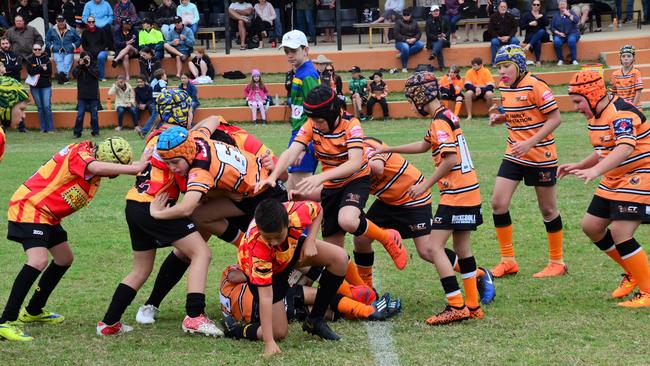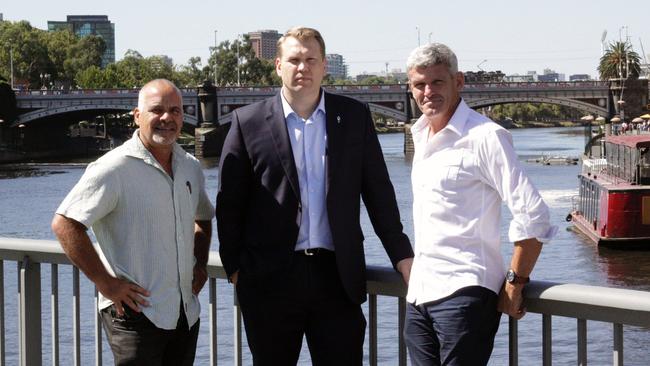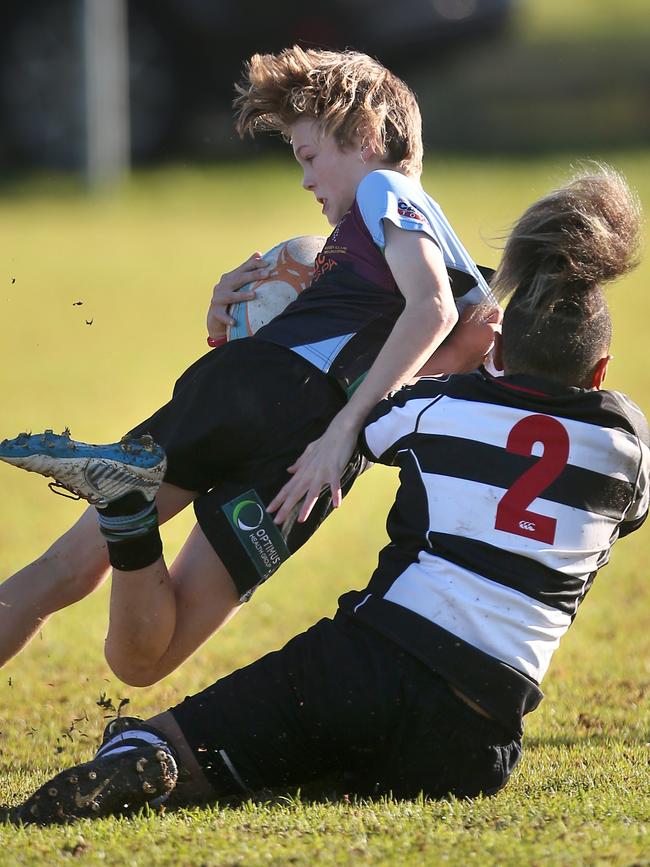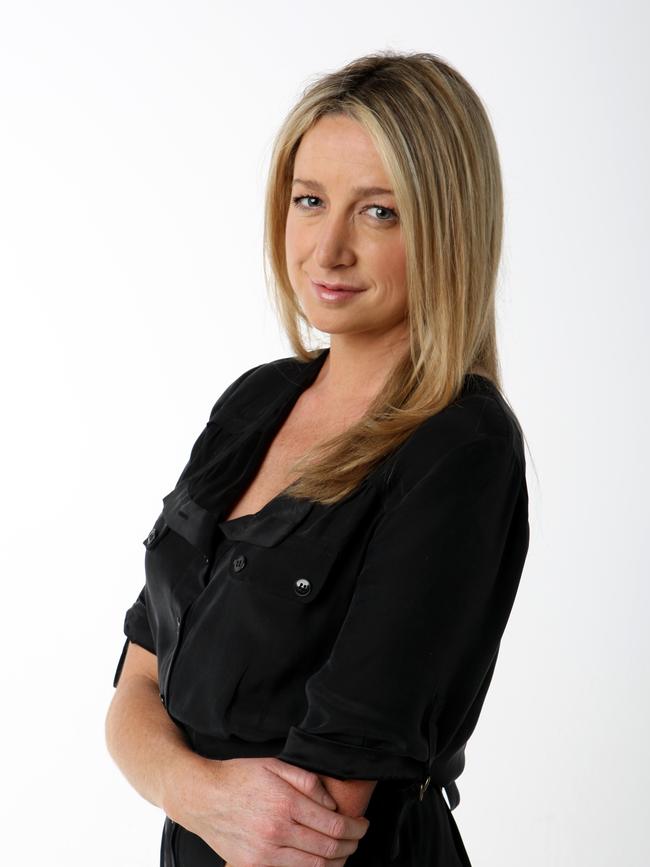Concussion crusader taken aback by tackling in under 6s rugby league
The question for all codes is why do we still allow kids below the age of 14 to tackle if it’s considered so dangerous by those who are a driving force behind research into concussion. Perhaps it’s time to reconsider tackling in junior footy, writes Jessica Halloran.
Sport
Don't miss out on the headlines from Sport. Followed categories will be added to My News.
As concussion crusader Chris Nowinski has put it; there is never a good enough reason to hit a child in the head hundreds of times for a sport
Nowinski also tells this column that children shouldn’t be playing tackle football until age 14.
Nowinski is a former Harvard footballer, WWE wrestler and is the co-founder and CEO of the Concussion Legacy Foundation. He helped Associate Professor Michael Buckland launch Australian Sports Brain Bank at the RPA hospital early last year.
When news broke this week that the brain disease Chronic Traumatic Encephalopathy was found to affected two rugby league players’ brains referred to Buckland my mind drifted to the kids colliding on our local sports grounds.

The kids of all codes, who chase the footy around on a winter’s morning for the love it, the ones who are playing tackle footy well before the age of 14.
In rugby kids can tackle and participate in lineouts from under 8s.
In junior Australian Rules players can begin to tackle from age 11.
When I tell Nowinski that junior rugby league kids can tackle in the under 6s, Nowinski is slightly taken aback.
“I didn’t think kids were playing tackle that young,” he tells this column.
MORE FROM JESS HALLORAN
EPL club Chelsea in $1m deal with Sam Kerr
‘Folau has a long history of going back on his word’
Time to invest in golden era of women’s sport
“You are talking to someone who played college football, was a professional wrestler, let people hit me in the head with chairs. I am all for contact, but not with what we have learned, I would never allow my child to be tackled or to tackle other children. It’s just not fair to them in my opinion.”
“Your fine motor skills develop very slowly. The idea of asking a child to use proper form and tackle safely at five years old, is a fool’s errand.”
The major footy codes are working hard to modify, monitor and make the game safer at the elite and junior levels.

This season the NRL have been stricter on concussion protocols and aware with a ‘spotter’ in the bunker and on the sideline. The most innocuous head knock often now is being considered for a HIA (Head Injury Assessment).
But the questions for all codes is why do we still allow kids below the age of 14 to tackle if it is considered so dangerous by a man like Nowinski who is a driving force behind research into concussion.
Is it time to reconsider tackling in junior footy?
“If you are old enough, 18 or older, you understand the risks of playing a dangerous sport,” Nowinski said.

“The same risk and reward equation is not the same for children. They are not getting paid to play dangerous sports. They can’t possibly understand the risks they expose themselves to. We have to look at whether or not kids should be doing the same risky activities that could cause CTE …
“There should be a conversation around when you can start tackling in any sport because tackling eventually results in head trauma.”
Nowinski who has a PhD in behavioural neuroscience, which he achieved after concussions he suffered as a college football player and pro wrestler ended his athletic career, says there are many reasons why it better for kids not to be involved in collision sports.
He said the age 14 makes sense in the United States because high school sports are better regulated, by that age there are doctors on the sidelines monitoring concussion.
“Then there are biomechanical reasons; your head grows before your body grows,” Nowinski said. “Before age 14 most children are not in a weight room so they don’t grow physical strength, the neck strength to protect themselves.”
“We’ve learnt a lot about brain development and the worst time to hit a developing brain is between the ages of 8 and 13. [If the brain is hit between those ages], you are probably altering who that child becomes …”
SPORT STARS DONATE BRAINS
Shortly after news broke of the two rugby league players who played more than 150 first grade games had suffered CTE, Parramatta Eels great Peter Sterling revealed that he would be donating his brain for research to “help” find out more about the impact of the sport he played for 220 first grade games.
Former St Kilda champion Nick Riewoldt also said he would donate his brain after he died for future research into the effects of concussion.
Before this week, the only previous case of CTE identified in an Australian athlete was that of rugby player Barry ‘Tizza’ Taylor — who’s brain was sent to Boston for analysis in 2013. CTE can only be confirmed via your brain being examined after death.

The potential signs of CTE are problems with thinking and memory, personality changes and behavioural changes including aggression and depression. In older people, it can be indistinguishable from Alzheimer’s disease.
In 2013, Carlton great Greg ‘Diesel’ Williams told a current affairs show he suspected he had CTE.
“They [football administrators] have been in denial on this, that it doesn’t exist, it’s just bullshit,’’ he told Channel 7.
Earlier this year it was reported that Adelaide lawyer Greg Griffin was leading a lawsuit on a behalf of a group of former AFL players, including Geelong champ John Barnes and Hawthorn great Johnny Platten, that is set to be filed against the AFL.
It is expected to allege that the AFL breached its duty of care by allowing players to routinely return to the field on the day and the following week following a ‘serious hit’.
Two former first grade NRL players — James McManus and Brett Horsnell — are currently locked in legal battles with the game over the long-term impact of concussions.
Nowinski said it’s “become clear” over the last decade from the research conducted on American footballers, that the risk of having CTE appears correlated with how many years they play tackle football.
“I am former professional wrestler, I understand and support adults doing a dangerous job, to entertain the public and make a lot of money,” Nowinski said. “But what we are dealing with in the United States is the best NFL players of all time are the most likely to have CTE, because they have the longest careers. We have this uncomfortable situation where the most famous players struggle publicly.
“It’s not good for the sport, if the prize at the end this career is this disease.”
“I would urge everyone involved in sport to recognise this week’s news as an opportunity to change the future. There’s so much we can do to prevent this disease from continuing modify how pro sports is played …. and you have to start having that conversation around; what age you should start tackling?”
In an article for Vox last year Nowinski quoted “exposure data” that shows children as young as nine are getting hit in the head more than 500 times in one season of youth tackle football in the US.
“That should not feel normal to us,” Nowinski wrote. “Think of the last time, outside of sports, you allowed your child to get hit hard in the head 25 times in a day. Better yet, when was the last time you were hit hard in the head?”
Originally published as Concussion crusader taken aback by tackling in under 6s rugby league


